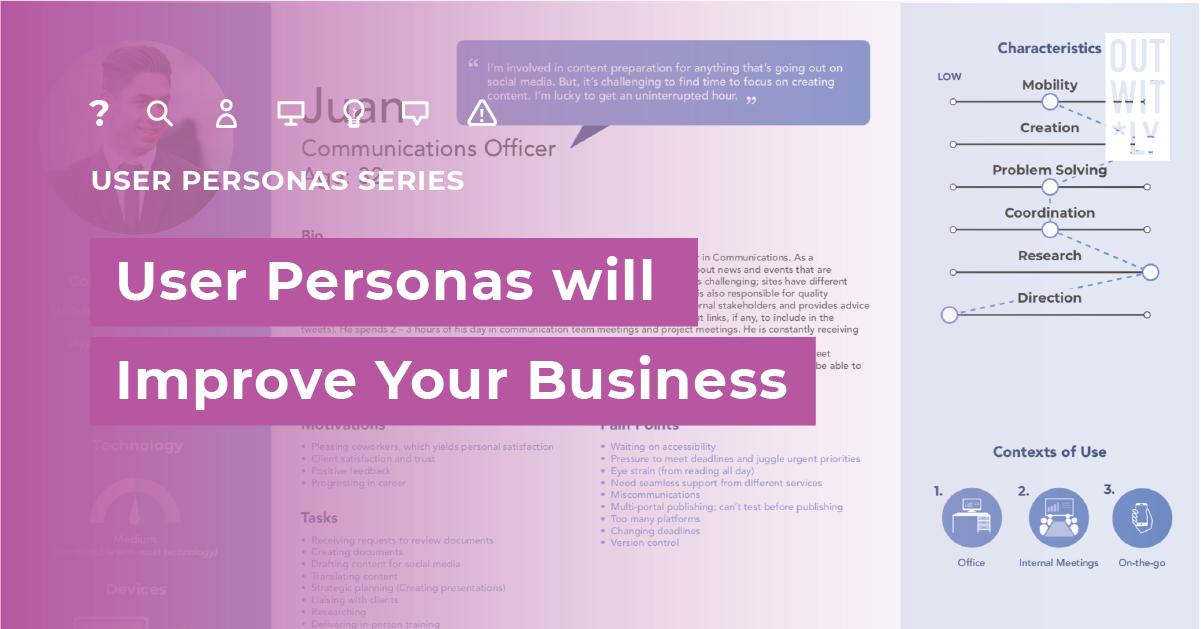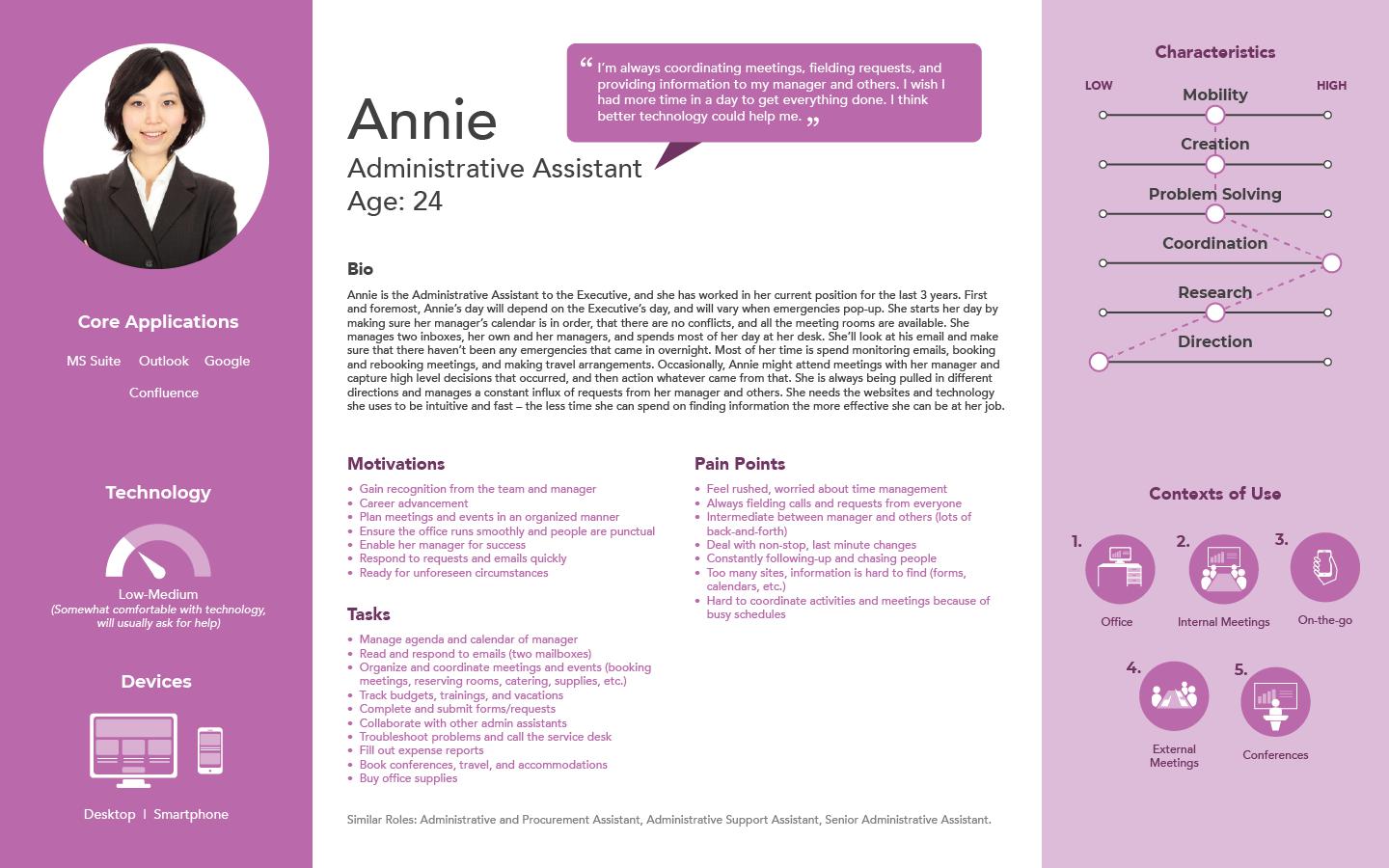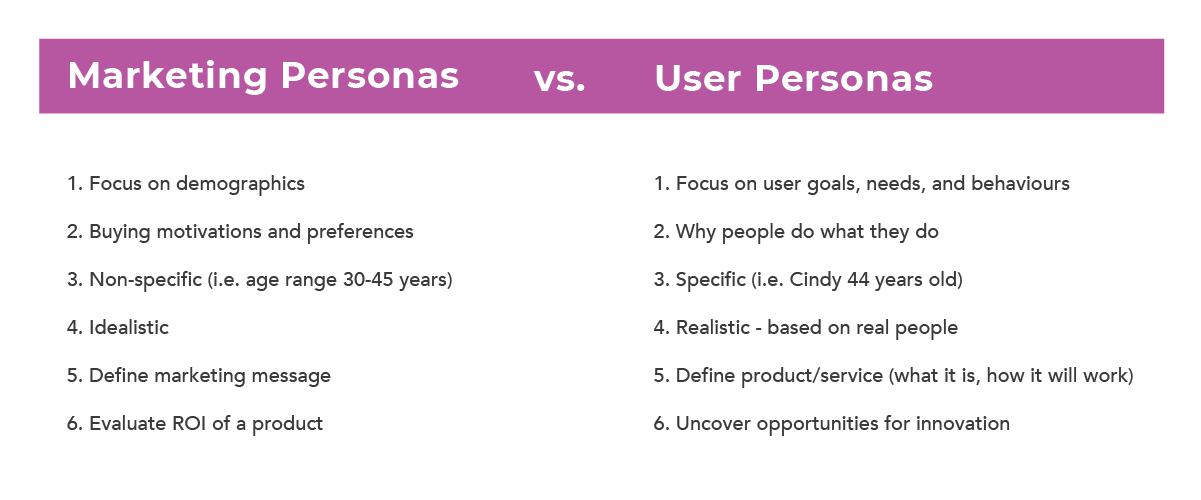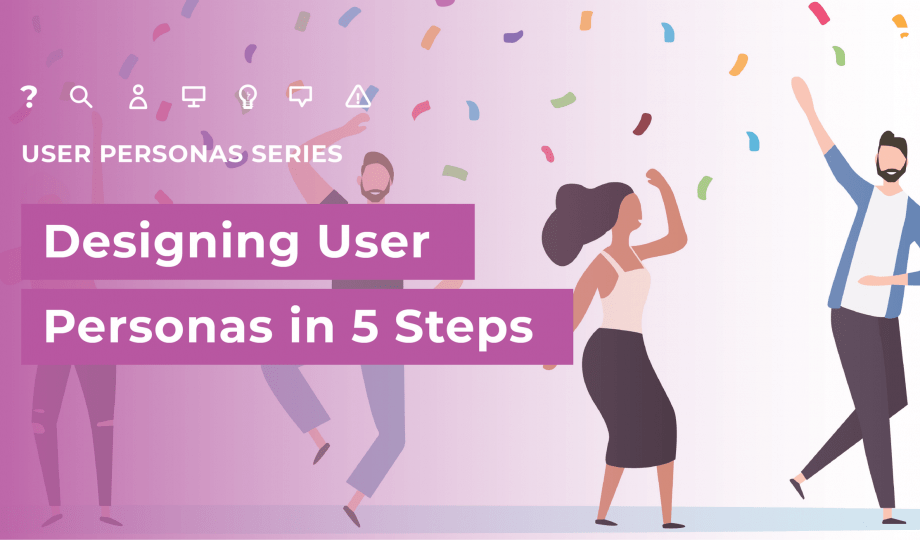What are user personas? Why are they such crucial tools for creating better products and services?
In our new 3-part blog series, we’ll explore the value of user personas, and when/how to apply them. We’ll walk you through why it’s so critical that you build a set––and many great techniques for doing so! Then, we’ll reveal how you can clearly communicate these new personas, and how to present and position personas to clients and team members who are less familiar with the UX or human-centered design (HCD) process.
Our User Personas Blog series appears in three parts:
-
How User Personas will Improve Your Business (this post)
What are personas, exactly?
Let’s start with the basics. User personas are a valuable human-centered design tool. When created and communicated properly, they are extremely effective for building customer/user empathy among teams, and for helping to constantly remind you who you’re creating a service or product for.
There are a few different types of personas you might encounter in a Google search. The most common types are marketing personas, which are sometimes called “customer avatars,” “buyer personas,” or “customer profiles.”
Each type of persona has a place in business, but in the design-thinking world and for the work we do, we are referring to user personas.
Here is Outwitly’s definition of user personas:
User personas are realistic representations of the different users that interact with an organization, based on research. They classify users into “archetypes” and do not represent one person, but instead are an amalgamation of many users who have similar goals, motivations, and backgrounds. Each persona describes the needs, tasks, and goals of a particular user group. They are realistic and based on research with actual end-users.
USER PERSONAS ARE:
-
A human-centered design and research tool
-
Based on research with actual users–they reflect actual people who have been interviewed and/or observed
-
High-level archetypes; each persona represents a group of users
-
An amalgamation of multiple people’s characteristics, goals, challenges, and needs
-
A representation of 80% of your users (not the outliers!)
-
A representation of the Current State (not the Future State)
USER PERSONAS ARE NOT:
-
A representation of a single person
-
Stereotypes or generalizations
-
Idealistic
-
Market segments
-
A role or job title (although this can play a part in a persona)
-
All-inclusive––they cannot capture every individual user in a system
Click through for a sample persona…
Humans are multifaceted and complex. Human-centered design aims to capture and understand this complexity through research in order to design products, services, and experiences that meet users’ needs, and most importantly, solve their problems (see our HCD blog series for more on this!)
User personas are a design tool that articulates this complexity by representing the human truths, the challenges, the backgrounds, and the influencing factors in a user’s life. The more realistic your personas, the more memorable and effective they are in building empathy among your team and clients.
Ultimately, user personas are a realistic representation of your users and should not present an idealized version. They should also reflect the user’s perspective and voice––and not that of the business!
AT THEIR MOST BASIC, PERSONAS CAPTURE:
-
Characteristics
-
Values, Attitudes, and Beliefs
-
Behaviours
-
Motivations
-
Pain Points
-
Context
-
Technology/Tools
-
Tasks
How do user personas really differ from marketing personas?
A marketing persona focuses on an individual’s demographic information––like age and occupation, location, lifestyle and shopping preferences, online habits, and so on. These personas are usually presented as a range of traits (e.g. 19–30 years old, living in France or England). In a marketing context, these personas are great for determining who might buy a product or service. But they can also be idealistic, and do not really explain why an individual behaves in a specific way, or how the product or service might actually be used.
User personas offer more answers. Based on qualitative research with real-life individuals, user personas explore a single user’s goals, needs, pain points, and behaviours. Typically, they tell a story about a user’s background, why they behave in a certain way, and what they care about and need. In a project setting, these personas can be extremely useful for giving all team members a sense of how users might use a product or service. Design-based user personas offer many more opportunities for innovation and product or service development.
User interviews are a great tool for developing personas! Learn how to get started with our free Plan A Stellar User Interview Workbook.
5 Reasons user personas are so valuable for business
-
They build empathy: Personas are most useful for team members and clients who are less familiar with the end-user, and who are not interacting with the user on a day-to-day basis. Personas can help the project team to “step outside” of themselves, and to serve as a reminder that the user is at the centre of the system (The project team and clients are not the users!) A set of personas can truly help teams understand and humanize their target audience on a deeper level. They also enable you to better understand the user’s pain points and motivations. If you can get inside the user’s head, it’s easier to predict their behaviours and design services or products directly for them. Empathy mapping is a great tool for this purpose — download our free empathy mapping template now!
-
They align teams: It’s so important for your project team to come to a consensus around who you are designing for, who is actually buying from you, and who the most important users are. Failing to do this can lead to self-referential design, and a lack of clarity around who the actual user is. (For more about avoiding the “elastic user,” see this useful article by NextBigWhat!) To learn even more about aligning teams and crafting a solid company vision, download Outwitly’s FREE ebook, Building a Lasting Vision with North Star Principles!
-
They develop focus: With a clear and tangible set of personas, you won’t waste time developing products and services that don’t serve your users. It is impossible to design for everyone at once, and by trying to do so, you risk designing for no one at all.
-
They satisfy the needs of many: At the same time, by referencing your personas, it’s possible to shape your product or service to satisfy the needs of hundreds or thousands of potential users who have similar characteristics and goals.
-
They inform design and development: As reference tools, personas are highly useful for designing and developing product features and services. Making tough decisions about your product or service is much easier with the user’s perspective (and persona) clear in your mind. What would they do, say, or buy? User-focused reasoning can help to answer these questions and determine what is useful to consider when making design- or project-related decisions, big or small. For example, you can ask yourself: which persona(s) does this service, product, or feature aim to help? What would this persona need in order to resolve their pain points?
Ready to create a set of unique user personas for your business? In Part Two of this series, we walk you through simple step to immediately draft a set of user personas!
Then, in Part Three, we explain how to communicate this new set of personas to your team or stakeholders, and how you can directly and immediately begin applying them to your work.
Resources we like…
-
Outwitly’s FREE ebook, Building a Lasting Vision with North Star Principles
-
UX Mastery’s Guide to Creating UX Personas
-
UXMag on Personas and User Experience
-
NextBigWhat explains the “elastic user”






